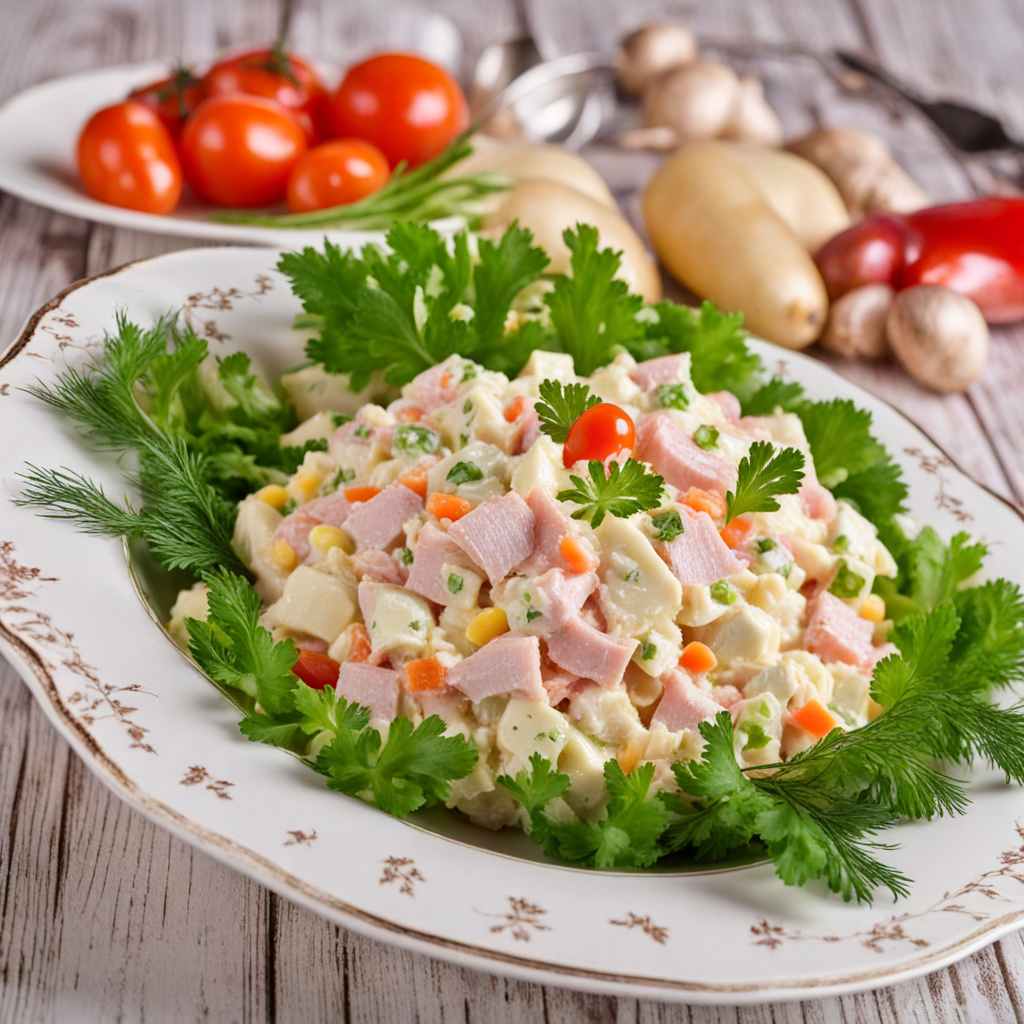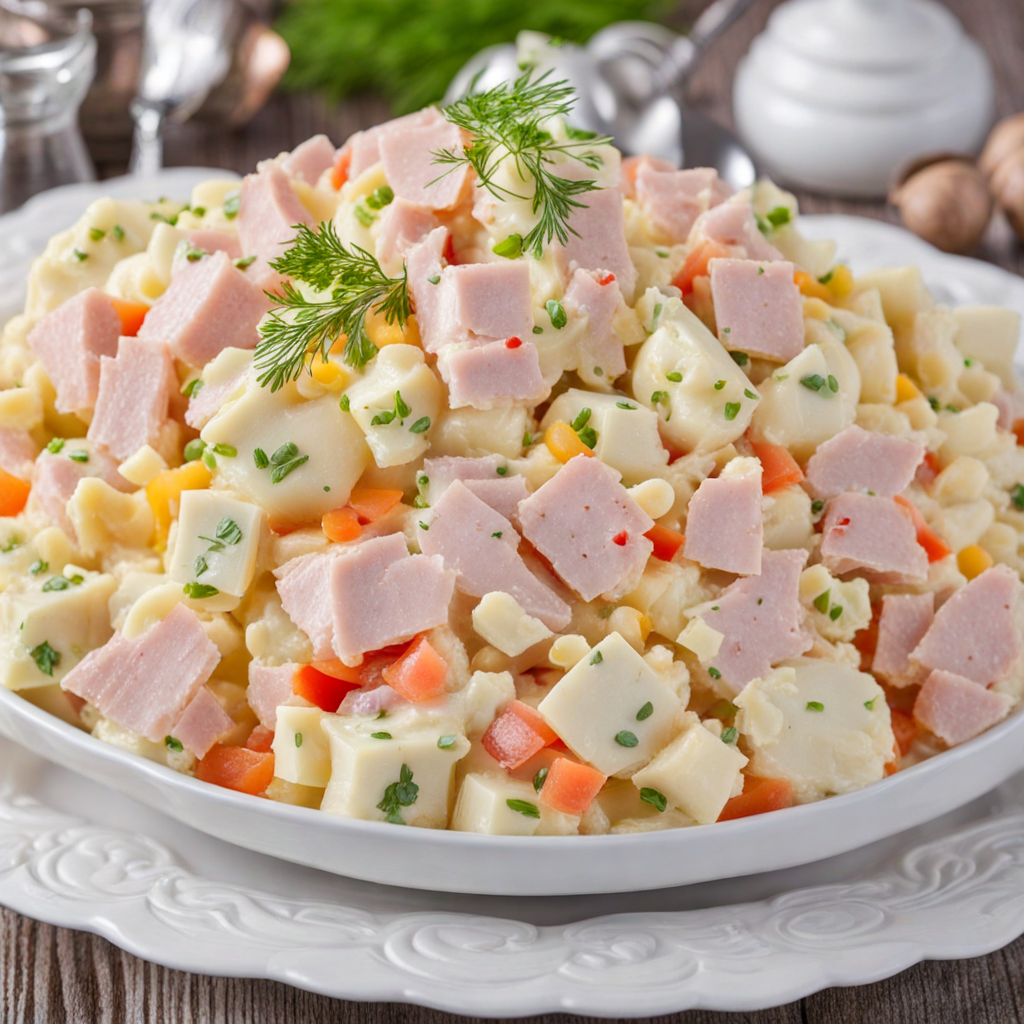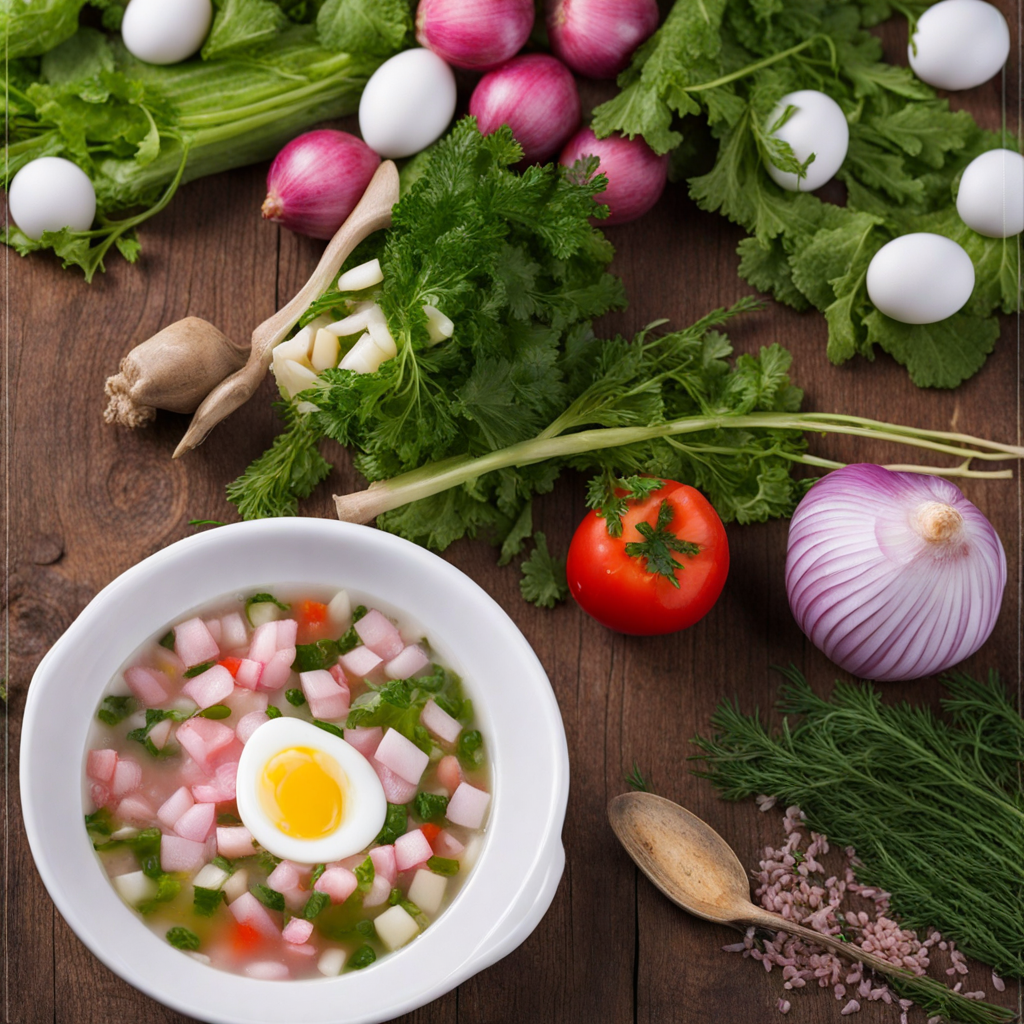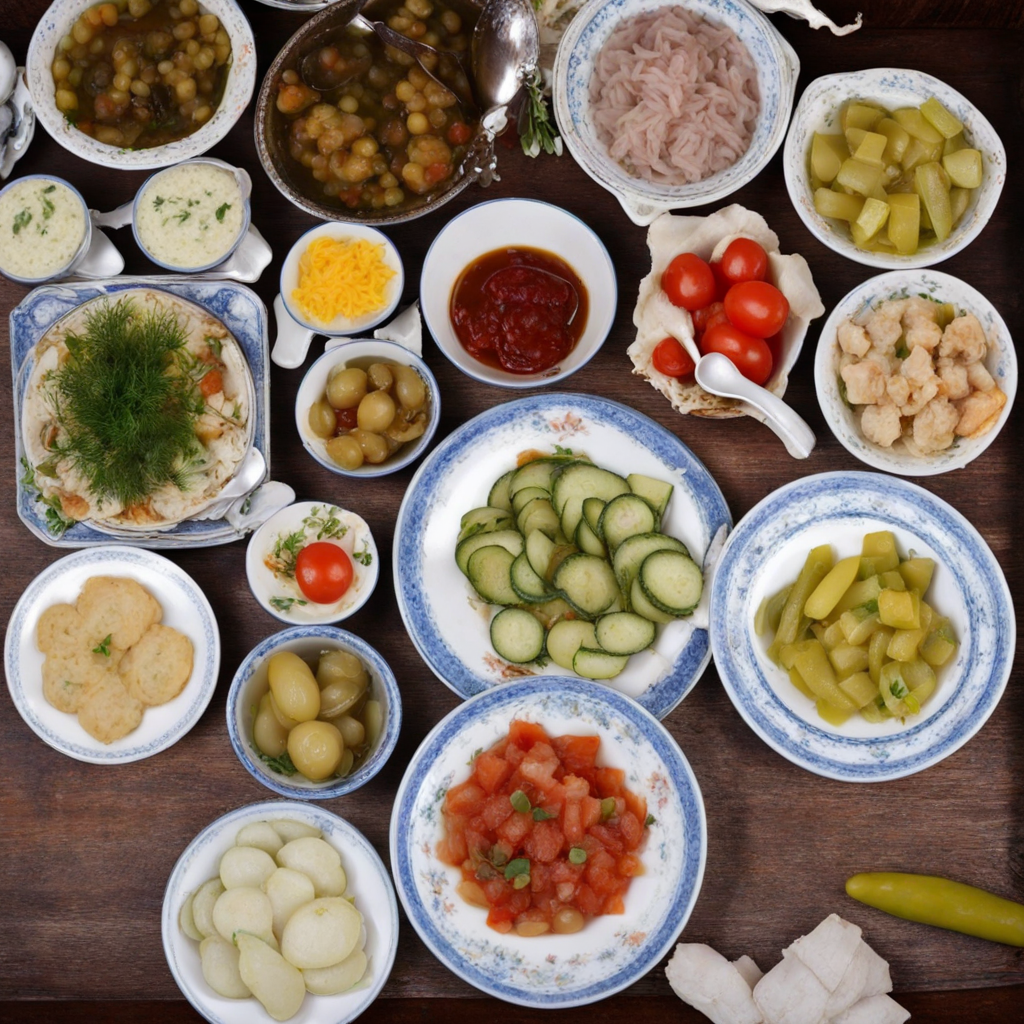Olivier Salad
Olivier Salad, often referred to as Russian Salad, is a delightful and hearty dish that embodies the essence of Russian cuisine. This salad is a colorful medley of diced vegetables, typically including boiled potatoes, carrots, peas, and pickles, all combined with a generous amount of mayonnaise. The richness of the creamy dressing complements the fresh and earthy flavors of the vegetables, creating a satisfying texture that is both crunchy and smooth. Often, diced boiled eggs and succulent pieces of meat, such as chicken or ham, are added to enhance the salad's flavor and provide a protein boost, making it a complete meal in itself. What sets Olivier Salad apart is its versatility and the personal touches that each family adds to the recipe. Some variations may include ingredients like apples for a hint of sweetness, or even boiled shrimp for a seafood twist. The balance of flavors is achieved through the combination of tangy pickles, sweet peas, and the subtle earthiness of the potatoes and carrots, resulting in a dish that is both refreshing and indulgent. This salad is often served chilled, making it a perfect dish for gatherings and festive occasions. In Russian culture, Olivier Salad has become a staple at celebrations, particularly during New Year's feasts, where it is enjoyed by families and friends alike. Its rich history and beloved status make it not just a dish, but a symbol of togetherness and nostalgia. The experience of enjoying Olivier Salad is not just about tasting the flavors; it's about embracing the warmth of shared moments, making it a must-try for anyone looking to explore the tastes of Russia.
How It Became This Dish
The History of Салат Оливье: A Culinary Icon of Russia Салат Оливье, often referred to simply as "Olivier salad," is a dish that has become synonymous with Russian cuisine. This rich and hearty salad, typically made with diced boiled potatoes, carrots, peas, pickles, eggs, and a protein such as chicken or bologna, all bound together with mayonnaise, is not only a staple at Russian festive gatherings but also a culinary symbol steeped in history and cultural significance. #### Origins The origins of Салат Оливье trace back to the 1860s, credited to a Belgian chef named Lucien Olivier, who was the head chef at the famous Hermitage restaurant in Moscow. Olivier's original recipe was quite different from the version we know today. It featured luxurious ingredients such as game (often veal or duck), crayfish, and a variety of fresh herbs, dressed with a homemade sauce that included mustard, oil, and vinegar. The salad was a reflection of the opulent dining culture of 19th-century Russia, showcasing the chef's skills and the availability of gourmet ingredients. The dish quickly gained popularity among the Russian elite, becoming a symbol of sophistication and culinary artistry. However, as the recipe spread beyond the confines of the Hermitage, it underwent significant adaptations. The Russian Revolution of 1917 marked a turning point in the country’s social and economic structure, leading to a scarcity of luxury ingredients. The elite class that once indulged in the original Olivier salad was replaced by a broader populace that sought affordability and sustenance. #### Cultural Significance As the years progressed, the salad evolved into a dish that represented the spirit of the Soviet era. The ingredients shifted from luxurious game meats to more accessible options, such as boiled potatoes, carrots, and the ubiquitous sausage or bologna. It became a staple in Soviet households and was often prepared for New Year's celebrations and other festive occasions. The transition of the salad from a gourmet dish to a common celebratory food illustrates the socio-economic changes in Russia, making Салат Оливье a dish of the people. Olivier salad's association with the New Year is particularly significant. The holiday season in Russia is marked by elaborate feasts, and Салат Оливье is often the centerpiece of the table. Its presence signifies abundance, joy, and nostalgia, as families gather to celebrate and reminisce. The salad has become a symbol of unity among Russians, transcending class and regional differences. Its preparation is often a ritual passed down through generations, with each family adding its unique twist to the recipe. #### Development Over Time Over the decades, Салат Оливье has continued to evolve, adapting to contemporary tastes while retaining its traditional roots. The post-Soviet era saw a resurgence of interest in gourmet cuisine, and many chefs began to experiment with the classic recipe, incorporating modern culinary techniques and diverse ingredients. While the classic version remains beloved, variations now exist that include ingredients such as smoked salmon, fresh herbs, and even exotic fruits. In the 1990s and early 2000s, as Russia opened up to global influences, Салат Оливье became popular in other post-Soviet states and even abroad. Russian expatriates brought the dish to new countries, where it was embraced by local communities. This internationalization has led to a broader appreciation of the salad, with many non-Russians discovering its charm and flavor. In contemporary Russia, Салат Оливье remains a beloved dish, often featured in restaurants and homes alike. It is not uncommon for chefs to put a modern spin on the classic salad, with some focusing on health-conscious ingredients or presenting it in a more upscale, artistic style. Each variation tells a story of personal preference and cultural adaptation, celebrating the idea that food is a living history that continues to change with time. #### The Ingredients and Preparation At its core, Салат Оливье is a salad that celebrates simplicity and comfort. Traditional recipes include boiled potatoes, carrots, peas, pickles, eggs, and a protein source, typically sausage or chicken, all diced into small pieces. The mixture is then bound together with mayonnaise, which has become an essential ingredient. The choice of mayonnaise, often homemade or store-bought, can significantly influence the final flavor of the dish. In many families, the preparation of Салат Оливье is a communal activity. It is common for family members to gather in the kitchen, each contributing to the process, whether it's peeling vegetables, chopping ingredients, or mixing the salad. This collaborative approach reinforces the salad's role as a dish of celebration and togetherness. #### Conclusion Салат Оливье is more than just a salad; it is a cultural artifact that reflects the history, struggles, and resilience of the Russian people. From its origins in a luxurious Moscow restaurant to its status as a beloved dish in households across the country, Olivier salad embodies the essence of Russian culinary tradition. Its ability to adapt over time, while remaining a staple at festive gatherings, speaks to its enduring charm and significance. Today, Салат Оливье continues to be a symbol of celebration and nostalgia, connecting generations through shared recipes and memories. As it evolves with contemporary tastes and global influences, it remains a beloved dish that carries the weight of history, culture, and the warmth of home. Whether enjoyed at a New Year's feast or a casual family dinner, Салат Оливье is a testament to the power of food to bring people together and preserve cultural identity.
You may like
Discover local flavors from Russia







